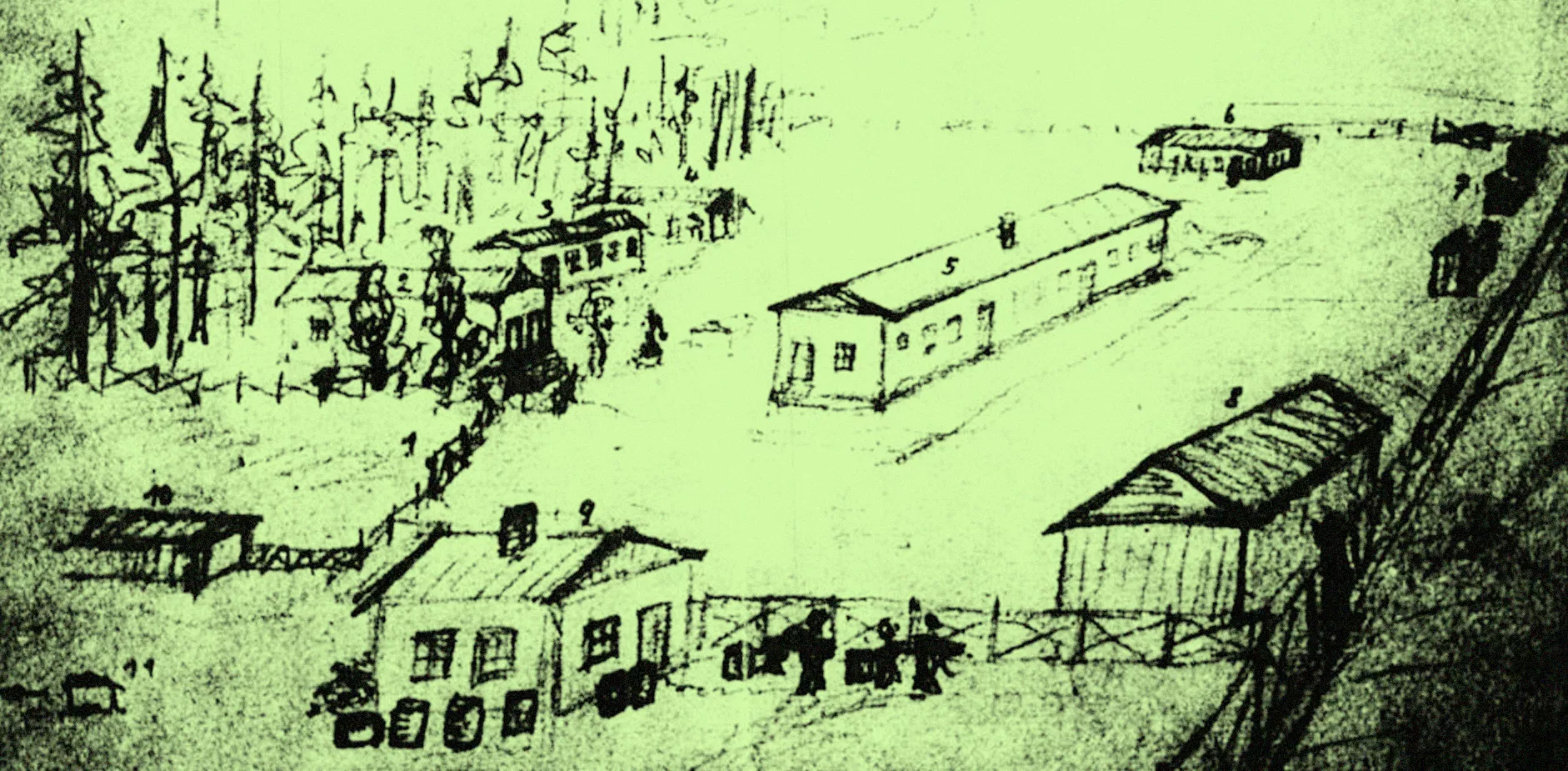
What was Wulkow?
Wulkow was, and still is, a small village on the edge of the Oderbruch. But the prevailing tranquillity began to wane towards the end of the Second World War. In the woods on the outskirts of the village, protected from the prying eyes of Allied reconnaissance and bombers, an alternative centre for the Reich Security Main Office (RSHA) was being established. The centre was built by people persecuted as Jews, who were specifically brought to Wulkow from the Theresienstadt ghetto hundreds of kilometres away.
In 1944, the German Wehrmacht was retreating on all fronts. The final phase of the Second World War and consequently of the National Socialist rule had begun. Berlin had already been experiencing regular and heavy bombing since the previous year. The Nazi's terror regime, largely orchestrated through the RSHA in Berlin, continued to expand with mass deportations from Hungary, the brutal suppression of the Warsaw Uprising and the expansion of the concentration camp system.
It was during this period that the leadership of the RSHA as well as its most notorious department, the Secret State Police (Gestapo), decided to relocate their offices to bomb-proof regions. Heinrich Müller, the head of the Gestapo ordered Adolf Eichmann to establish a second office in Wulkow. Wulkow was chosen, in particular, due to its secluded location as well as its proximity to a communications cable and a Reichspost amplifier station. And for the same reasons, the NSDAP party chancellery built an alternative centre in Wulkow.
„I surveyed the area and then drafted a letter to the commander of the Sipo and SD in the Protectorate of Bohemia and Moravia, Dr Weinmann, in which I asked him to provide Office IV with about a dozen and a half barracks that were surplus to requirements in Theresienstadt and to ready them as well as a group of Jewish craftsmen and Jewish builders. Group leader Müller signed this letter, and sometime later I travelled to Theresienstadt.“
Adolf Eichmann in the 1950s
Just like everywhere else in the German sphere of power, people were forcefully recruited to work on the construction of these Nazi hideouts. Their gruelling work resulted in the erection of around 30 barracks. In the summer of 1944, parts of the centre began their work.
- © Brandenburgisches Landeshauptarchiv
„The Wulkow camp was officially labelled as a barrack camp and barracks were indeed built there, but I thought I was in a concentration camp.“
Kurt Weigl, witness statement Vienna People's Court, 15 December 1949
In the spring of 1944, the SS put together the external labour detail "Barackenbau" ("Barrack Construction") in the Theresienstadt ghetto. On the morning of 2 March 1944, the people chosen for the detail reported to the ghetto railway station and could hardly believe what they saw there: a passenger train. Were they being deceived again and this was just another "mode of transport" to the extermination camps? With relief they soon realised that the train was travelling towards Berlin. They left the train at Trebnitz station on the "Eastern Railway" line and were made to walk the rest of the way.
- © Beit Terezín, Israel
They spent their first night in the open air. Over the following weeks and months, they erected numerous barracks and moved twice with the prisoner camp. In total, almost 400 people were deported to Wulkow. They came from the German-occupied part of Czechoslovakia, from Austria and from the "Altreich" ("Old Reich"). Around 10 percent were women. Many of the male prisoners had previously worked as craftsmen in the ghetto.
At the end of January 1945, the rumbling of the front could also be heard in Wulkow. The feared camp commandant Franz Stuschka, a close associate of Eichmann, ordered the "evacuation" of the camp. On the night of 2 to 3 February, the guards marched the remaining 215 Wulkow prisoners to Trebnitz station where a train was waiting for them. Shortly after departure, they were caught up in the heavy air raid of 3 February 1945 in a suburb of Berlin. Miraculously, all prisoners survived the eight-day journey back to the Theresienstadt ghetto. Some of them were later selected again to build an alternative centre, this time near Hof in Bavaria.
- © Privat
- © Privat
- (c) Privat
- © Arbeitskreis Wulkow
- © Arbeitskreis Wulkow
